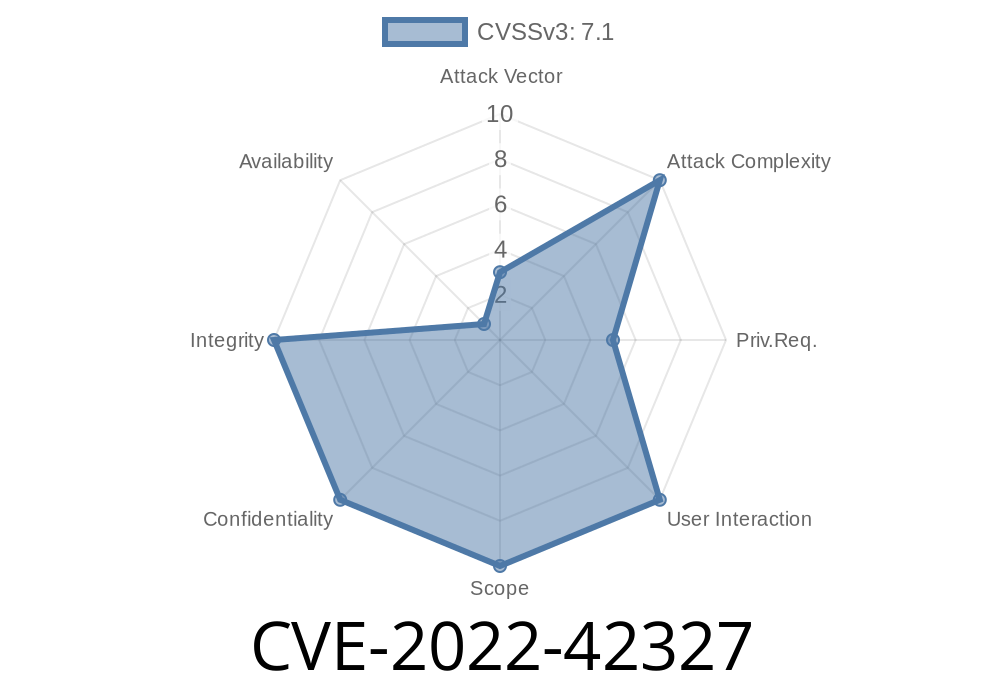As technology advances and the demand for virtualization solutions is increasing at a rapid pace, security vulnerabilities involving memory isolation between guests in virtualized environments can lead to serious security concerns. Today, we will delve deep into the details of the CVE-2022-42327 vulnerability present in x86 architectures on Intel systems. This vulnerability revolves around unintended memory sharing between two guests, potentially causing critical security issues.
Background
The vulnerability has its roots in the x86 Intel system architecture, specifically related to the "virtualize APIC accesses" feature. The Advanced Programmable Interrupt Controller (APIC) is an essential component of x86 systems, responsible for interrupt handling and communication between CPUs in multiprocessing environments. Intel systems support a shared local xAPIC (IA32_APIC_BASE MSR, Extended page table (EPT) violation handling) mode for performance optimizations and easy access to APIC registers.
However, with the virtualize APIC accesses feature comes the risk of exposing sensitive memory contents between two or more guests in a virtualized environment, leading to the CVE-2022-42327 vulnerability.
The Vulnerability: CVE-2022-42327
The CVE-2022-42327 vulnerability allows a guest to read and write the global shared xAPIC page by taking the local APIC outside the xAPIC mode, effectively bypassing isolation between guests sharing the same physical system. The security implications of this vulnerability are severe, as it allows potentially malicious guests to access sensitive data stored in the memory of other guests or even gain unauthorized access to the host system.
Here's a code snippet that shows an exploit example, where Guest 1 tries to access the shared xAPIC page of Guest 2:
// Switch from xAPIC mode to APIC mode
rdmsr(IA32_APIC_BASE, eax, edx);
eax &= ~(1 << 10);
eax |= (1 << 8);
wrmsr(IA32_APIC_BASE, eax, edx);
// Read and write the global shared xAPIC page
volatile uint32_t* shared_apic_page = (volatile uint32_t*)xfee00000;
uint32_t original_data = shared_apic_page[];
shared_apic_page[] = xdeadbeef;
uint32_t new_data = shared_apic_page[];
In this code snippet, Guest 1 takes the local APIC out of xAPIC mode and then reads and writes to the shared xAPIC page, potentially accessing sensitive data of Guest 2 and violating memory isolation.
Original References and Acknowledgments
Credit for discovering and disclosing this vulnerability goes to security researchers, who have been tirelessly working on spotting and fixing security vulnerabilities in hypervisors and virtualization solutions. You can find the original discussion threads and links to detailed technical explanations here:
1. Intel's virtualize APIC accesses explanation
2. Virtualization on x86: Memory Protection and Isolation
3. National Vulnerability Database (NVD) - CVE-2022-42327
What should you do?
If you administer a virtualized environment using Intel x86 systems or are responsible for implementing virtualization security measures, it is crucial to keep track of security updates and patches related to CVE-2022-42327. Be sure to follow security news and updates for the hypervisor you are utilizing and apply the necessary patches as soon as they become available.
In conclusion, the CVE-2022-42327 vulnerability is a serious security concern in x86 Intel systems that utilize the virtualize APIC accesses feature. It is recommended to stay vigilant, follow security updates, and apply the necessary patches to mitigate the risks posed by this vulnerability and safeguard your virtualized environments.
Timeline
Published on: 11/01/2022 13:15:00 UTC
Last modified on: 01/20/2023 02:39:00 UTC
